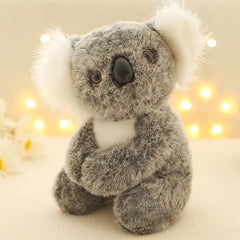
Stuffed Animal Restoration
PillowNap TeamShare
A Guide to Bringing Back the Cuddles
Stuffed animals aren't just toys – they're cherished companions that hold memories of childhood, comfort, and endless love. But with time, wear and tear takes a toll. Tears appear, stuffing clumps, and fur becomes matted. Don't despair! Here's a comprehensive guide to restoring your beloved stuffed animals, giving them a new lease on life.
Step 1: Assessment and Cleaning
- Document the Damage: Examine your stuffed animal carefully. Take pictures and notes of rips, holes, missing parts (eyes, nose), areas of thinning fur, and any stains.
- Check the Tag: Look for the care label, which might provide cleaning and material information.
- Gentle Surface Cleaning: Start with a soft cloth dampened with soapy water. Gently wipe away surface dirt and grime. Do not fully submerge the toy unless absolutely necessary.
- Spot Cleaning Stains: For tough stains, try a mild stain remover. Test on a discreet area of the stuffed animal first to ensure there's no discoloration.
Step 2: Repairs and Refurbishment
-
Tears and Holes:
- Small Tears: Mend by hand-sewing the seams back together. Use a matching thread and a needle suitable for the fabric.
- Large Holes: Patch with a piece of similar fabric from the back. If you're sewing by hand, try to hide the stitches beneath the fur of the stuffed animal.
-
Replacing Eyes and Noses: If original parts are lost, find similar replacements at craft stores or online. Secure them with fabric glue or by carefully re-sewing them.
-
Matted Fur: Gently brush the fur with a pet comb or a fine-toothed comb. Stubborn mats might need to be carefully teased apart with a sewing needle.
-
Re-stuffing: If the stuffing has become lumpy or sparse over time, you can replace it. The amount of stuffing you'll need depends on the size of your stuffed animal. Here's a general guide:
- Small stuffed animals (under 12 inches): 4-6 ounces (115-170 grams) of stuffing

- Medium stuffed animals (12-20 inches): 8-12 ounces (230-340 grams) of stuffing
- Large stuffed animals (over 20 inches): 12-16 ounces (340-450 grams) of stuffing (or more for very large toys)
Keep in mind that this is just a starting point. You may need to adjust the amount of stuffing based on the desired firmness of your stuffed animal. Add the stuffing gradually and close the seam securely after each addition. Stop stuffing when the toy feels firm and huggable.
Step 3: Deep Cleaning (Optional)
- Handwashing: If your plush toy is very dirty or has an odor, submerge it in a sink or bathtub filled with cool water and gentle detergent. Agitate gently, then rinse thoroughly until no soap remains.
- Machine Washing (Caution): If the stuffed animal is durable and the care tag allows, wash it on a gentle cycle in a pillowcase or delicates bag. Use cold water and mild detergent.
- Air drying: Gently squeeze out excess water and allow the stuffed animal to air dry completely. Avoid using a dryer unless absolutely necessary and only with a no-heat tumble setting.
Step 4: Specialized Repairs
- Faded Fur: If sun exposure has faded the fur, fabric dyes carefully applied to the specific areas can help restore the color. Research and test this method before attempting it fully.
- Antique or Fragile Toys: Professional restoration services specialize in repairing vintage and extremely delicate stuffed animals.
Tips for Restoring Stuffed Animals
- Start Simple: Begin with minor repairs to build your confidence before tackling major restoration projects.
- Source Materials Carefully: Fabric stores offer a diverse range of materials for matching fabric and crafting replacement parts.
- Test First: Always test cleaning solutions, dyes, or techniques on an inconspicuous part of your stuffed animal to check for adverse reactions.
- Patience is Key: Restoration takes time and careful attention to detail.
When to Seek Professional Help:
- Fragile Fabrics: If your plush toy is made of silk, velvet, or other delicate fabrics, seek a professional textile restorer.
- Rare or Valuable Collectible: For antique or collectible toys, a restoration specialist will preserve the item's value and integrity.
- Extensive Damage: When in doubt, consult a professional for extensive damage assessment and repair work.
Remember: Don't be afraid to give your beloved stuffed animal a second chance! With a bit of care and love, you can restore them to their former cuddlesome glory, preserving the memories and comfort they hold.


